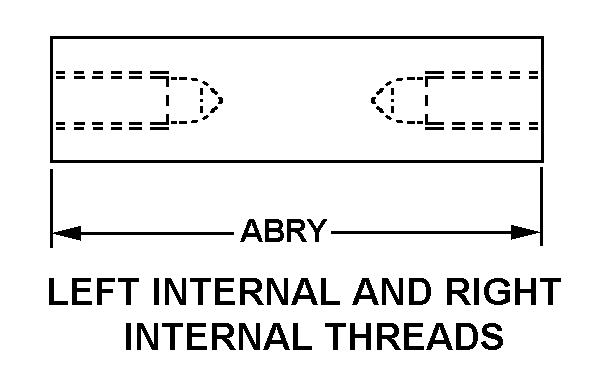5340016291575
Price Quote Get an up to date pricing and availability quote for this product. Order online or over the phone.
Quality Commitment
Serving our customers with quality and safety first.
- AS9120 Certified
- Audited supply chain
- ITAR Registered
- DDTC Registered
- HAZMAT Certified
- Customer service objectives
- Every product 100% inspected

5340-01-629-1575 Specification Set by the OEM (see RNCC code 3)
2b right internal
RIGHT-Hand right internal
0.75in. right internal ⁓3/4"
1.245in. and 1.255in.
hexagon
0.307in. and 0.319in. ⁓21/64"
32 right internal
0.1380in. right internal ⁓9/64"
steel comp 4130 or steel comp 8630 or steel comp 8740
MIL-S-6758 mil spec 1st material response or MIL-S-6050 mil spec 2nd material response or MIL-S-6049 mil spec 3rd material response
cadmium
QQ-P-416, type 2, class 2 fed spec single treatment response
left internal and right internal threads
unc right internal
80205-NAS1831 professional/industrial association standard
Cross Reference Parts Part numbers that meet the specification outlined on this page and set by the OEM
Identification Item Identification Guide (IIG) and Item Name Code (INC)

Definition Definition of approved item name (AIN): "STANDOFF,THREADED,SPACING"
A standoff that must have a threaded end(s) or be internally threaded its full length. For items having external threads on both ends, see stud (as modified). For items with an outside contour that is the same for the entire length, are flat on top and bottom, having internal threads its full length, and the length does not exceed twice the width across the flats or outside diameter, see nut (as modified); use maximum dimensions(s) for compliance.
5340-01-629-1575 Material Hazmat, Precious Metals, Criticality, Enviroment, and ESD
Indicates there is no information in the hmirs. The nsn is in a fsc in table ii of fed std 313 and a msds may be required by the user. The requirement for a msds is dependent on a hazard determination of the supplier or the intended end use of item.
Item does not contain precious metal.
No known electrostatic discharge (esd) or electromagnetic interference (emi) sensitivity.
Represents items with no adp components
The item does not have a nuclear hardened feature or any other critical feature such as tolerance, fit restriction or application.
Identification Codes
HMIC: Hazardous Material Indicator Code. A one position code that identifies a hazardous item.
PMIC: Precious Metal Indicator Code. A one position code which identifies items that have precious metals as part of their content. precious metals are those metals generally considered to be uncommon, highly valuable, and relatively superior in certain properties such as resistance to corrosion and electrical conductivity.
ESD: Electrostatic Discharge. Indicates if an item is susceptible to electrostatic discharge or electromagnetic interference damage. electrostatic discharge damage occurs when an accumulation of static electricity generated by the relative motion or separation of materials is released to another item by direct contact. electromagnetic interference damage occurs when an item comes into proximity with an electrostatic or magnetic field.
ENAC: Enviromental Attribute Code. Identifies items with environmentally preferred characteristics.
CRITL: Criticality Indicator Code. Indicates an item is technically critical by tolerance, fit, application, nuclear hardness properties, or other characteristics.






